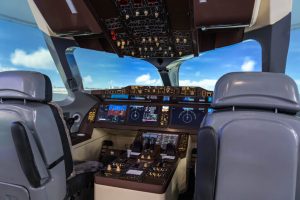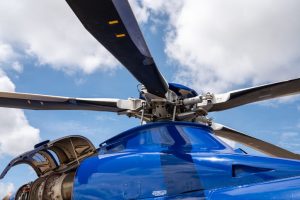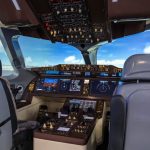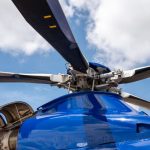Pilot training that includes the controllability check can help ready pilots for mid air incidents
Have you ever considered what you would do if you suddenly became a test pilot in the aircraft you have been flying for years? It can happen in the blink of an eye and it’s in your best interest to include the ability to perform a controllability check in your pilot training.
Think about the Southwest Airlines uncontained engine failure that occurred last year. It resulted in an obvious loss of thrust in the engine, but what about the damage to the engine nacelle, fuselage, wing and tail surfaces? The random damage to the aircraft ultimately changed its flying qualities.
Knowing how to do controllability checks on your aircraft is a critical skill that too few pilots take the time to think about. You may find yourself in need of these checks as a result of aircraft damage from various causes, including a mid air collision or a load factor/speed limit exceedance after an upset recovery. You may also find yourself in an aircraft with jammed flight controls, runaway trim or even an out of CG situation due to a shifting load. You’ll want to do this check any time anything might affect your approach and landing characteristics.
A properly performed controllability check can determine if the flight manual limitations have been negatively affected. Awareness of this change may actually save your life. Some aircraft manuals provide specific guidance for determining aircraft control after an incident, but if your manual does not, then please consider the following procedures suggested by Marty Rollinger, Director of Flight Ops and member of the Falcon Operator Advisory Board:
The purpose of the check is to methodically determine the optimal landing configuration and airspeed so that you will have sufficient control throughout the landing. The decision to use full, partial, or no flaps should be made during the controllability check at altitude. In addition:
- Declare an emergency with ATC so that you have the freedom to conduct the controllability check.
- Maintain at least 5,000 feet AGL if able – higher if you can.
- Reduce speed slowly in 5 kt increments, trimming as required.
- Decelerate no slower than normal Vapp or the speed where ½ yoke or ½ rudder deflection is required to maintain balanced flight. This is your new minimum controllable speed.
- Assess the controllability in a 15 degree angle of bank turn. If aileron displacement in one direction is required for straight and level flight, all turns should be initiated in that direction. Lower the gear as soon as possible to ensure there are no issues with gear extension.
- Fly the actual approach no slower than the minimum controllable airspeed plus 10 knots.
If possible, use your time in the simulator to request some controllability type failures. There is no better way to experiment with the operating characteristics of your aircraft.
At the very least, including this exercise in your pilot training will make it easier to accomplish the proper procedures if an incident requires your test pilot abilities. If you are prepared with a plan on how to analyze the controllability of your plane after an incident, you will not be surprised when control issues surface as the plane slows for landing.
RELATED READING
RELATED CTS TRAINING










